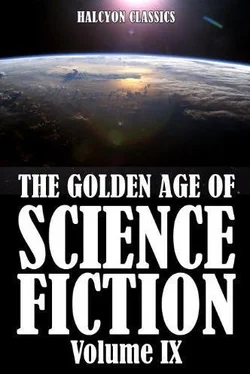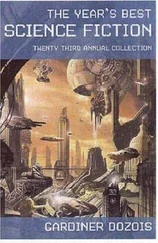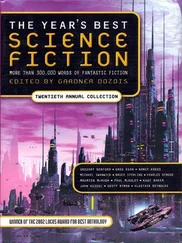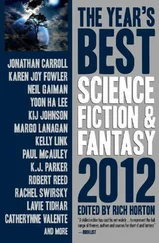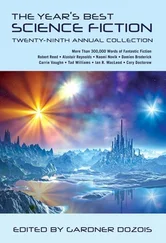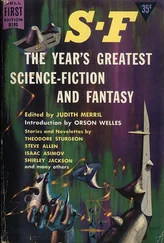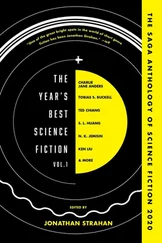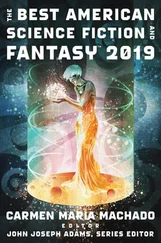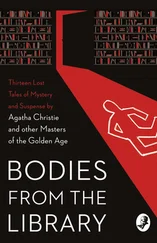“As the result of very long continued and systematic observation of the lines on Mars, together with carefully plotting them down on a globe, it was found that every line was continuous, uniform in width, and went straight from one definite point to another, not one breaking off in open space. Moreover, on being tested, nearly all were found to be arcs of great circles, and therefore the shortest possible lines which could connect any two points on a sphere. This fact strongly supports the idea that they are not natural but artificial formations. For a long time the lines were only seen on the red, or lighter, parts of the planet, but in 1892 an expedition was sent from Harvard Observatory to Arequipa, in Peru, for the purpose of observing the planet under very favourable conditions, and this resulted in important discoveries. Professor W.H. Pickering, who accompanied the expedition, was fortunate enough to observe that the canal lines extended over the dark or blue-green portions of the disc; and later observations have proved that this is the case all over the planet, and the lines are visible from pole to pole.
“These observations also led Professor Pickering to the important conclusion that all the dark areas were covered with vegetation, and that the bright or red areas were deserts, the colour of the latter being exactly that of our deserts when viewed from a great distance. Herschel’s idea had been that the red areas were land covered with vegetation of a red colour, and that the dark areas were seas.
“It was, however, now quite clear that permanent lines in such numbers and length could not exist in seas; and other observations have demonstrated that, instead of appearing smooth and uniform as water would, these areas are full of detail and variations, and that they pass through all the changes of colour, according to seasons, that land covered with vegetation does upon our earth. In the winter time, when the land is fallow, it appears brown or chocolate colour; in the spring, the time of early vegetation, it becomes a pale blue-green tint; as the season advances the blue-green becomes darker; whilst in the autumn it tends to a light brown, and at length changes into chocolate colour in the winter. This has been carefully noted time after time when the planet has been in a position to be observed; and the same sequence of change—which can only be associated with vegetation—has always occurred.
“It may, therefore, now be accepted as a proved fact that the dark areas are land upon which vegetation grows, ripens, and dies away according to the seasons of the Martian year.
“Professor Pickering also made another discovery, viz. a large number of isolated, round, darkish spots, most of which occurred where canal lines joined or crossed each other. Some of these had been seen much earlier by other observers, but Professor Pickering was the first to see them in large numbers and call attention to them. He termed them ‘lakes,’ but later discoveries from continued observation showed that they were not water, and they were then given the name of ‘oases.’ Some are seventy or eighty miles in diameter, and nearly two hundred are now marked on the maps. They mostly occur in certain definite positions—in the point where single canals join or cross each other, or, in the case of double canals, between the two lines. It has been noted that they undergo the same seasonal changes as the dark areas do, but only as regards the outer portion of the circle, which gradually fades away in the latter part of the Martian year; whilst the central portion becomes fainter but does not disappear.
“Of course it was at once declared that these oases were illusions which would naturally be seen where two lines crossed each other and were viewed from a great distance. But they only occur in some cases at such crossings, and there are many junctions without any oases. Moreover, they are also seen between the double canals where there are no junctions nor anything which could give rise to illusion.
“At Flagstaff Observatory it was also noted that the canal lines themselves underwent seasonal changes. Those viewed during the winter season were always so faint as to be scarcely discernible, but at the period when vegetation would naturally begin to grow they became more easily visible, and still more distinct as the season advanced.
“Then Professor Lowell announced his great conception, which has given rise to so much controversy, and has also been much misunderstood and misrepresented.
“Briefly, his conclusions were as follows:—‘Science teaches that a small planet will become cool and develop life much sooner than a large one. Similarly a small iron casting will become cool in a few days, whilst a large one will be many weeks or even months in cooling. A small planet will also develop more rapidly, and reach its final stage when it will be incapable of supporting life, very long before a larger planet like our earth will have reached that stage. Applying this to Mars, a much smaller planet than our earth, it is scientifically reasoned that Mars has passed through nearly all its stages and is approaching its last. It has lost much of its atmosphere, all its large bodies of water, such as oceans or seas, and, as regards the land, that has become levelled by erosion, and about five-eighths of the whole area has become desert.
“‘Science also shows that in such circumstances rain would cease to fall over the larger part of the planet, but the water vapour in the air would be carried by natural circulatory currents of air to the polar regions, and there deposited in the form of snow or hoarfrost, thus forming a large snow-cap at the north pole in one season of the year, and a still larger snow-cap at the south pole in the opposite portion of the year.
“‘These snow-caps would begin to melt in the spring as soon as the tilt of the planet brought the pole to the position where the sun would take effect, and would continue during the early summer. As there is no permanent glaciation on a planet which has lost its water, the snow-cap would melt to a very large extent, and the resultant water must go somewhere.
“‘The inhabitants of the planet could not exist without water, and their land would become entirely desert unless supplied with moisture. It will, therefore, be seen that the only thing possible, as a means of self-preservation, would be for them to make channels to carry the water in the most economical way from the poles to the parts where it was needed. Unless they found a means of doing this death stared them in the face. What greater incentive could there be!’
“This is what Professor Lowell is convinced has actually been accomplished upon Mars, with the result that there is a network of canals all over the planet by which water is conveyed from each pole and carried across from one hemisphere into the other. The lines seen show where the canals are, but not the canals themselves, because they are too narrow to be seen. The lines really are broad bands of vegetation irrigated by the canals which run through them, hence the seasonal changes which have been noted in their colour.
“All this seems very reasonable, deduced as it is from scientific fact and from the many different things which have actually been seen and confirmed by many thousands of observations, but it has met with the most bitter opposition on the part of many astronomers, both professional and amateur. Theory after theory has been brought forward with the object of disproving the existence of the canal lines; some of these, such as eye-strain, diplopia, bad focussing, illusion, and imagination, have already been mentioned.
“Proofs of the reality of the lines having become too strong for most of the objectors, they then turned their endeavours to the overthrowing of the theory that the lines were canals, suggesting that they were all of natural origin.
Читать дальше
